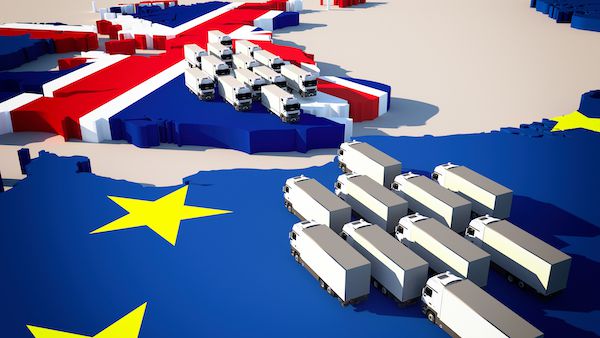
 For the last few months you may have been aware of something happening in the UK called Brexit. Put simply, it’s the UK’s initiative to leave the European Union (EU). As a Brit who has lived in the US for half of my life, I still have strong connections back to the mother country and have been watching developments over there with a keen interest.
For the last few months you may have been aware of something happening in the UK called Brexit. Put simply, it’s the UK’s initiative to leave the European Union (EU). As a Brit who has lived in the US for half of my life, I still have strong connections back to the mother country and have been watching developments over there with a keen interest.
To say it is chaotic is a major understatement. With only a few weeks until the supposed exit date, the details of the form of the exit are still not agreed between the UK government and the EU. So what does all of this have to do with managing your supply chain?
Well, actually, a lot!
As of now, British and European producers can freely trade their products across 28 member countries without any tariffs or border checks. It is still possible that in a few weeks this will no longer be the case, and there are no rules yet on how it will actually work.
Consumers on both sides of the English Channel are tending to fall into one of two camps. One camp believes a major disruption is ahead and people have been frantically stockpiling whatever they can get their hands on (including prescription drugs, wine and toilet paper). The other camp is the “it’ll be alright on the night” believers who think that despite whatever chaos ensues, things will quickly be resolved and everything will return to normal.
For producers of perishable products it is not so simple. One expectation is that without free movement of goods, border checks and quarantines will need to be introduced in both directions. Supply chains would be seriously compromised. One estimate is that at the Dover crossing (one of the busiest between UK and Europe) it would take more than a week to inspect just one day’s worth of traffic. A recent New York Times article noted a few of the challenges:
Some 90 percent of lettuce, 80 percent of tomatoes and 70 percent of strawberries and blueberries in Britain comes from the European Union at that time of year. It cannot be stockpiled — and even if it could, storage space is running out.
So much for fresh!
It’s the same for hard goods. The auto industries on both sides of the Channel depend on just-in-time deliveries to maintain their production lines. Any disruption causes serious problems. Manufacturers have been planning on shifting entire production plants in the event of certain versions of the Brexit chaos.
Needless to say there are many groups who are desperate to get confirmation about the process, but with the government still undecided that makes it difficult. Chaos!
For growers and producers this is a time for contingency planning. There is little time and there are still several possible outcomes including the UK leaving EU on March 29, the UK leaving EU on June 30, the UK leaving EU at some date far in the future, and of course -- my favorite -- the UK not leaving the EU at all.
It’s impossible to have concrete plans for all these scenarios, but it would be equally negligent not to consider your options. The starting point is making sure that you understand your supply chain intimately. If you have any doubts about exactly who is involved where and what their position is in various scenarios, now is the time to learn. Another task would be to talk to your partners and other companies in a similar situation. Open lines of communication now so you can be ready for whatever happens. Third, if there are critical components to your finished products that you don’t have direct control over such as packaging, perhaps some selective stockpiling is worthwhile.
This is no time for the feint of heart. Whether you’re part of a supply chain in Europe, working within NAFTA, or even trading with China, there is major disruption happening all around the world. Having systems and strategies in place for visibility across all parts of your supply chain is increasingly critical in these chaotic times.
Lorem ipsum dolor sit amet, consectetur adipiscing elit

These Stories on Global Trade
Procurant USA LLC
475 Alberto Way - Suite 230
Los Gatos, CA 95032
1-669-221-1026
info@procurant.com
